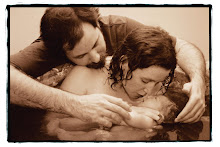The side-sleeping part is newer, so those of us with preschoolers may not be aware of it - not sure if I was, to be honest. But the big take-away for me was the connection to previously-used crib mattresses. So I'm posting it here in case you hadn't heard of that either.
From the new issue of Midwifery Today e-news:
...One thing not mentioned in this campaign was the SIDS risk caused by fungus and chemicals found in babies' mattresses. From 1988–1989 Barry Richardson, a British chemist, tested the mattresses of 200 babies that had died of SIDS and found all of them infected with S. brevicaulis fungus and spores and phosphorus, arsenic or antimony; and when brought to body temperature, each generated toxic gas from these chemicals. Ninety-five percent of the mattresses had been used previously by another infant, as well. This information, while published in Midwifery Today (Issue 61, Spring 2002, http://www.midwiferytoday.com/products/mt85.htm), was never made widely available in the US.*must mean "stomach"In 2005, the AAP advised parents not to place babies on their stomachs or on their sides to sleep. It seems that several studies had shown in increased risk of SIDS in relation to side- or back-sleeping*, particularly when the baby has symptoms of infection. And the wheel goes round.
Despite these well-publicized recommendations, according to an article in The New York Times (18 Oct 2005), increasing numbers of parents are letting their babies sleep on their stomachs. The article quoted an unscientific internet poll which showed that virtually equal numbers of parents put their babies to sleep on their stomachs (42%) as on their backs (43%). This is quite an increase from the 2002 statistic given by the National Center for Health Statistics (NCHS) of 11.3% of parents whose babies slept on their stomachs, but not anywhere near the 70% of babies that slept on their stomachs in the mid-1990s. So why are parents taking this risk with their babies' lives?
Parents who admit to putting their babies to sleep on the stomachs are clear on why they do so: the babies sleep better and are more likely to sleep through the night sooner. Even the Academy admits this.
Another reason that parents may be averse to always placing babies on their backs to sleep is positional plagiocephaly, or malformation of the head. According to the AAP, this issue still needs more study to determine whether a correlation exists. It is something that parents should be aware of if their baby is back-sleeping.
Interestingly, even medical professionals don't feel obligated to follow these guidelines in many cases. According to the AAP position paper, hospital personnel often place preterm babies on their sides or stomachs during hospitalization, modeling such management to parents and perhaps accustoming the babies to this position.
An interesting study from California showed that infants who were not used to sleeping on their stomachs were at greater risk when sleeping that way than those who were used to sleeping on their stomachs.
— Cheryl K. Smith
Excerpted from "Go to Sleep, Little Baby," The Birthkit, Issue 50













No comments:
Post a Comment